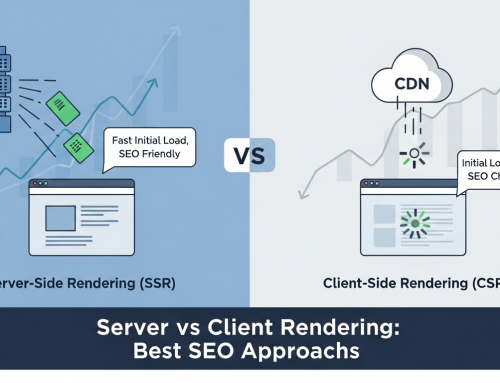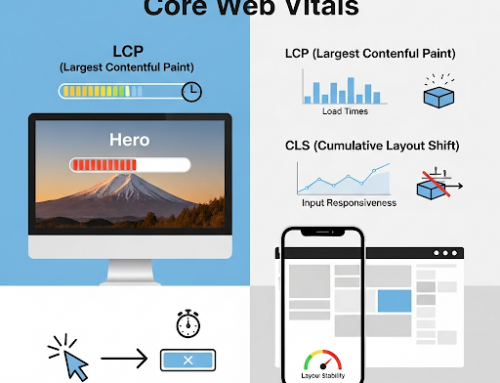Introduction
In the ever-evolving digital landscape, achieving a high search ranking is crucial for driving visibility and attracting potential customers. As we navigate through 2024, the strategies to enhance your search engine optimization (SEO) efforts must adapt to the latest trends and technological advancements. From leveraging artificial intelligence to optimizing user experience and creating high-quality content, each component plays a vital role in improving your search rankings. This guide explores ten proven strategies that can help elevate your SEO game, ensuring your website stands out in a crowded digital space and effectively reaches your target audience.
1. Embrace the Power of AI in SEO
Artificial Intelligence (AI) is revolutionizing the way we approach SEO, particularly in keyword research and content creation. AI tools analyze vast amounts of data to uncover trends and insights that traditional methods might miss. For instance, AI can predict which keywords will perform best based on current search patterns, user behavior, and competitive analysis, significantly enhancing keyword research accuracy.
Tools like Ahrefs, SEMrush, and Moz now incorporate AI to provide advanced keyword suggestions and content optimization recommendations. AI-driven content generators, such as Copy.ai and Jasper, help create engaging, relevant content quickly, ensuring it aligns with SEO best practices and user intent.
To integrate AI into your SEO strategy effectively:
- Utilize AI for Keyword Research: Leverage AI tools to discover high-value keywords and understand their competitive landscape.
- Incorporate AI Content Tools: Use AI-driven content creation tools to generate high-quality, optimized content at scale.
- Monitor AI Insights: Regularly review AI-generated insights to adapt your strategy based on the latest data trends.
2. Optimize for User Experience (UX)
User Experience (UX) plays a critical role in search rankings, as search engines prioritize sites that offer a seamless and engaging experience. A positive UX can lead to lower bounce rates, longer session durations, and higher conversion rates, all of which signal to search engines that your site provides valuable content.
Key UX factors to focus on include:
- Page Load Speed: Fast-loading pages improve user satisfaction and reduce bounce rates. Aim for load times under 3 seconds.
- Mobile Responsiveness: With increasing mobile searches, ensure your site is fully optimized for mobile devices. A responsive design adapts seamlessly to different screen sizes.
- Intuitive Navigation: Create a user-friendly site structure with clear menus and easily accessible content.
Best practices for enhancing UX involve:
- Optimizing Page Speed: Compress images, leverage browser caching, and use content delivery networks (CDNs).
- Designing for Mobile: Implement a responsive design and test your site on various devices.
- Simplifying Navigation: Use clear headings, organized menus, and straightforward paths to key content.
3. Focus on Quality Content Creation
High-quality content is essential for SEO success because it directly influences user engagement and search engine rankings. Search engines prioritize content that provides value to users, addressing their needs and interests effectively. Quality content attracts more visitors, encourages longer site visits, and generates backlinks, all of which are vital for improving your search ranking.
Strategies for Creating Engaging and Informative Content:
- Understand Your Audience: Conduct thorough research to identify your target audience’s needs, preferences, and pain points. Tailor your content to address these aspects directly.
- Focus on Originality: Create unique content that offers new insights or perspectives. Avoid duplicating information found elsewhere and strive to add value through original research, case studies, or expert opinions.
- Incorporate Relevant Keywords: Use keyword research to guide your content creation. Integrate these keywords naturally into your content to improve its relevance and searchability.
Leveraging Content Marketing for Better Search Rankings:
- Develop a Content Strategy: Plan and schedule your content around relevant topics and keywords. Ensure a mix of content types, such as blog posts, infographics, and videos, to cater to different audience preferences.
- Promote Your Content: Share your content across social media platforms and engage with your audience to drive traffic and increase visibility. Consider guest posting or collaborating with influencers to reach a broader audience.
- Monitor and Adjust: Use analytics tools to track your content’s performance. Analyze metrics such as page views, engagement rates, and conversion rates to refine your strategy and make data-driven improvements.
4. Implement Advanced On-Page SEO Techniques
On-page SEO is fundamental for optimizing individual web pages to rank higher and earn more relevant traffic. Key elements include meta tags, headers, and keyword placement. Meta tags, such as the title tag and meta description, provide search engines and users with a summary of your content. Headers (H1, H2, H3, etc.) structure your content, making it easier to read and understand while also helping search engines comprehend the hierarchy and relevance of your information. Effective keyword placement involves incorporating target keywords naturally into your content, headers, and meta tags to signal its relevance to search queries.
The Role of Schema Markup and Structured Data: Schema markup and structured data enhance your content’s visibility by providing search engines with additional context. This code helps search engines understand and display your content more effectively in search results, such as rich snippets, which can improve click-through rates. For instance, schema markup can display star ratings for reviews or event details, making your listing more attractive to users.
Tips for Optimizing On-Page SEO in 2024:
- Optimize Meta Tags: Craft compelling and relevant title tags and meta descriptions that incorporate your target keywords and entice users to click.
- Enhance Headers: Use headers to structure your content logically, ensuring they include relevant keywords and improve readability.
- Leverage Schema Markup: Implement schema markup to provide search engines with structured information about your content, enhancing its visibility and appeal in search results.
- Focus on Content Quality: Ensure your content is comprehensive, relevant, and provides real value to users, incorporating keywords naturally and avoiding keyword stuffing.
5. Harness the Power of Local SEO
Local SEO is crucial for businesses with a physical presence or those targeting a specific geographic area. It helps your business appear in local search results when potential customers search for products or services nearby. Effective local SEO enhances your visibility within your community and drives more relevant, localized traffic to your website.
Strategies for Optimizing for Local Search:
- Google My Business (GMB): Claim and optimize your GMB listing. Ensure your business information is accurate and up-to-date, including your address, phone number, and operating hours. Add high-quality images, respond to customer reviews, and use posts to engage with your audience and highlight promotions.
- Local Citations: Ensure consistency across local business directories and citation sites. List your business on relevant local directories such as Yelp, Yellow Pages, and local chamber of commerce websites. Consistent NAP (Name, Address, Phone number) information helps search engines validate your business’s location and credibility.
- Local Keywords: Incorporate geo-specific keywords into your website’s content, meta tags, and headers. Use phrases like “plumber in [City]” or “best coffee shop near [Neighborhood]” to attract local search traffic.
Leveraging Local Content and Reviews:
- Create Local Content: Develop content that resonates with your local audience. Write blog posts about local events, news, or industry-specific topics relevant to your area. This not only engages your community but also helps search engines associate your site with local relevance.
- Encourage Reviews: Actively seek and manage customer reviews on platforms like Google, Yelp, and Facebook. Positive reviews enhance your business’s reputation and influence local search rankings. Respond to reviews to show engagement and build trust with potential customers.
6. Build High-Quality Backlinks
Backlinks are a fundamental component of SEO, as they serve as a vote of confidence from other websites, indicating that your content is valuable and credible. High-quality backlinks can significantly improve your search rankings by enhancing your site’s authority and trustworthiness in the eyes of search engines.
The Role of Backlinks in Improving Search Rankings: Backlinks help search engines determine the relevance and authority of your site. When reputable websites link to your content, it signals to search engines that your content is valuable and worth ranking higher. Quality backlinks can also drive referral traffic, increasing your site’s visibility and potential for engagement.
Strategies for Acquiring High-Quality Backlinks:
- Create Valuable Content: Produce high-quality, informative, and engaging content that naturally attracts backlinks. Content such as in-depth guides, original research, and infographics are more likely to be linked by other websites.
- Guest Blogging: Write guest posts for reputable blogs or industry websites. This provides an opportunity to include backlinks to your site within the content or author bio.
- Build Relationships: Network with industry influencers and thought leaders. Building genuine relationships can lead to natural backlink opportunities through mentions or collaborations.
- Analyze Competitor Backlinks: Use tools like Ahrefs or SEMrush to analyze your competitors’ backlinks. Identify high-quality link sources and target similar opportunities.
Avoiding Common Pitfalls and Spammy Practices:
- Avoid Low-Quality Links: Steer clear of link farms, paid links, or any practices that violate search engine guidelines. Links from low-quality or irrelevant sites can harm your SEO efforts.
- Monitor Your Backlink Profile: Regularly review your backlink profile to ensure that you’re not accumulating harmful links. Disavow any spammy or toxic links to protect your site’s credibility.
- Focus on Relevance: Ensure that the backlinks you acquire are from sites relevant to your industry or niche. Irrelevant links can dilute your site’s authority and negatively impact your rankings.
7. Utilize Video Content for SEO
Video content has become increasingly important in SEO as search engines, particularly Google, prioritize diverse and engaging content formats. Videos not only capture user attention but also contribute to higher engagement rates, which can positively impact search rankings.
The Growing Importance of Video in Search Engine Algorithms: Search engines are evolving to prioritize multimedia content, including videos, because they enhance the user experience by providing valuable, easily digestible information. Videos often appear in search results and can increase visibility through video snippets, which attract clicks and drive traffic to your site.
Best Practices for Optimizing Video Content:
- Craft Compelling Titles: Use clear, descriptive titles that include relevant keywords. A well-crafted title helps both users and search engines understand the video’s content.
- Write Detailed Descriptions: Include a thorough description with keywords and relevant information. This helps search engines index the video correctly and provides context for viewers.
- Use Tags Effectively: Incorporate relevant tags to help search engines categorize your video. Tags improve discoverability by linking your video to related content.
- Create Engaging Thumbnails: Design eye-catching thumbnails that accurately represent the video content. Thumbnails play a crucial role in attracting clicks and increasing views.
How to Leverage Video Marketing to Boost Your Search Rankings:
- Embed Videos on Your Site: Host your videos on your website and create dedicated landing pages or blog posts around them. This keeps users on your site longer, signaling quality content to search engines.
- Promote on Social Media: Share your videos across social media platforms to drive traffic and increase engagement. Social signals can indirectly influence search rankings by increasing visibility and generating backlinks.
- Encourage User Interaction: Prompt viewers to like, comment, and share your videos. High engagement levels can boost the video’s ranking on both search engines and video platforms like YouTube.
- Optimize for Mobile: Ensure that your videos are mobile-friendly. With a growing number of users accessing content via mobile devices, a mobile-optimized video experience is crucial.
8. Optimize for Voice Search
Voice search is rapidly gaining popularity as more users turn to voice-activated devices like smartphones, smart speakers, and virtual assistants. This shift impacts SEO by altering the way people search for information, often using natural, conversational language rather than traditional keywords. To stay competitive, it’s crucial to optimize your content for voice search.
The Rise of Voice Search and Its Impact on SEO: Voice search queries tend to be longer and more conversational compared to text-based searches. Users often ask questions or use phrases like “near me” or “how to.” This trend means that SEO strategies must adapt to include natural language processing and focus on answering specific questions.
Strategies for Optimizing Content for Voice Search Queries:
- Use Conversational Keywords: Focus on natural language and long-tail keywords that reflect how people speak. Incorporate question-based phrases and common queries relevant to your content.
- Optimize for Featured Snippets: Structure your content to answer questions directly and concisely. Featured snippets often appear in voice search results, so formatting your content to provide clear, quick answers can improve visibility.
- Enhance Local SEO: Many voice searches are local in nature. Optimize your content for local queries by including location-specific information and updating your Google My Business profile.
- Improve Page Load Speed: Fast-loading pages enhance user experience, especially for voice search users who expect quick results. Ensure your site is optimized for speed to reduce bounce rates.
9. Monitor and Adapt to Algorithm Changes
Search engine algorithms are continuously evolving, and 2024 is no exception. These updates are designed to improve the relevance and quality of search results, making it essential for SEO professionals to stay informed and agile. Understanding and adapting to these changes can help maintain and enhance your search rankings.
How Search Engine Algorithms Are Evolving in 2024: In 2024, search engines are placing increased emphasis on user intent, content quality, and site usability. Updates are focusing on delivering more personalized and contextually relevant results. For instance, search engines are refining their ability to understand natural language queries and improving how they assess content quality and user engagement metrics.
Tools and Methods for Staying Updated with Algorithm Changes:
- SEO News Sites and Blogs: Follow reputable sources like Moz, Search Engine Journal, and Neil Patel for the latest updates and expert analyses on algorithm changes.
- Google Search Console: Monitor performance reports and notifications for any issues or changes impacting your site’s visibility.
- Industry Forums and Communities: Engage with SEO communities on platforms like Reddit, LinkedIn, or specialized forums to discuss recent updates and share insights.
Strategies for Adapting Your SEO Strategy:
- Regularly Review and Update Content: Ensure your content remains relevant, high-quality, and aligned with current SEO best practices. Regular updates help address changes in search algorithms and user expectations.
- Optimize for User Experience: Continuously improve site speed, mobile responsiveness, and overall user experience, as these factors are increasingly important for search rankings.
- Monitor Metrics and Adjust: Use analytics tools to track changes in your site’s performance. Analyze shifts in traffic, rankings, and user behavior to identify areas needing adjustment.
- Stay Agile: Be prepared to pivot your strategy based on new algorithm updates. Flexibility and responsiveness are key to maintaining and improving your search rankings in a dynamic SEO landscape.
10. Invest in Technical SEO
Technical SEO encompasses the behind-the-scenes aspects of your website that impact search engine crawling and indexing. It plays a crucial role in ensuring that search engines can effectively access, understand, and rank your content. Investing in technical SEO not only improves your site’s performance but also enhances user experience and search visibility.
Overview of Technical SEO and Its Importance: Technical SEO focuses on optimizing your site’s infrastructure to facilitate better search engine crawling and indexing. Proper technical SEO ensures that search engines can efficiently navigate your site and understand its content, which directly affects your search rankings. Issues like slow page load times or broken links can hinder your site’s performance and negatively impact user experience.
Key Technical SEO Factors to Focus On:
- Site Architecture: Organize your site with a clear, logical structure that makes it easy for search engines to crawl and index your pages. Implement a sitemap and use a hierarchical structure with internal linking to connect related content.
- Crawlability: Ensure that search engine bots can access and crawl your site effectively. Use tools like Google Search Console to check for crawl errors and make necessary adjustments.
- SSL Certificate: Secure your site with HTTPS to protect user data and boost credibility. Google considers HTTPS as a ranking factor, and a secure site enhances trust with users.
How to Conduct a Technical SEO Audit and Fix Common Issues:
- Perform a Site Crawl: Use SEO audit tools such as Screaming Frog, Ahrefs, or SEMrush to conduct a comprehensive crawl of your site. Identify issues like broken links, duplicate content, and missing meta tags.
- Check Site Speed: Analyze your site’s load times using tools like Google PageSpeed Insights or GTmetrix. Optimize images, enable browser caching, and improve server response times to enhance performance.
- Review Mobile Usability: Ensure your site is mobile-friendly by using Google’s Mobile-Friendly Test. Address any issues related to responsive design and mobile usability.
- Fix Technical Issues: Resolve identified issues, such as fixing broken links, improving site speed, and ensuring proper URL structure. Regularly monitor your site to address any new technical challenges.
Conclusion
In 2024, staying ahead in the competitive digital landscape requires a multifaceted approach to SEO. By embracing advanced strategies such as integrating AI tools, optimizing for user experience and voice search, and leveraging high-quality content and video marketing, you can significantly enhance your search rankings. Additionally, focusing on local SEO, building authoritative backlinks, and investing in technical SEO are essential for maintaining and improving your site’s visibility. Adapting to algorithm changes and continuously refining your SEO strategy will ensure that your website not only meets but exceeds search engine standards, ultimately driving more targeted traffic and achieving long-term success.






